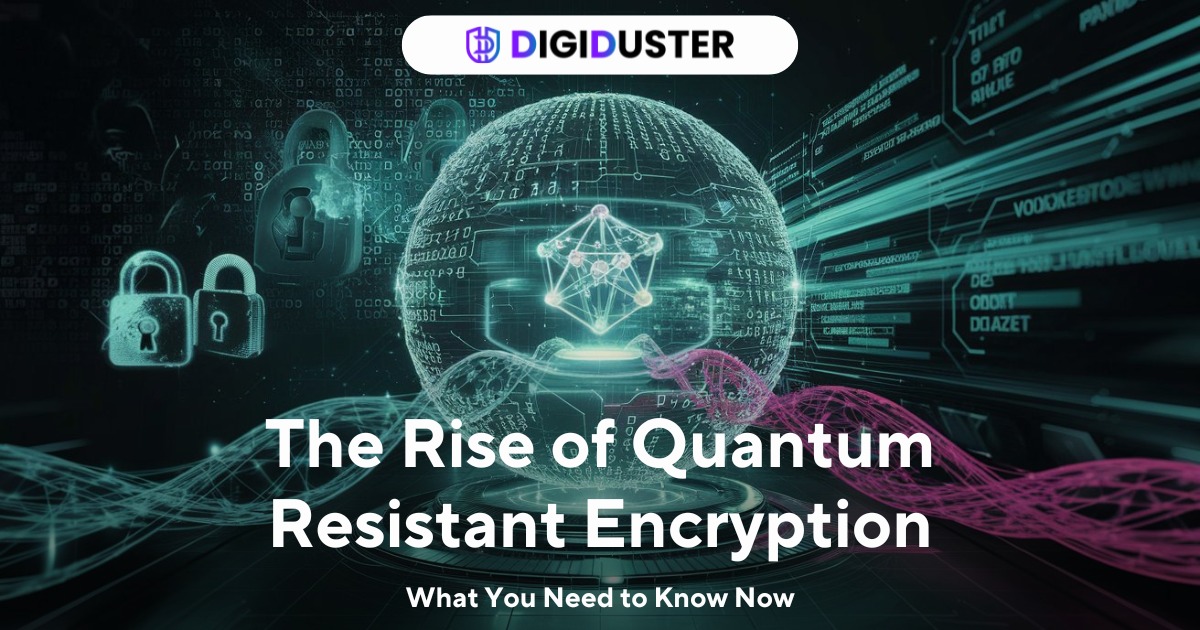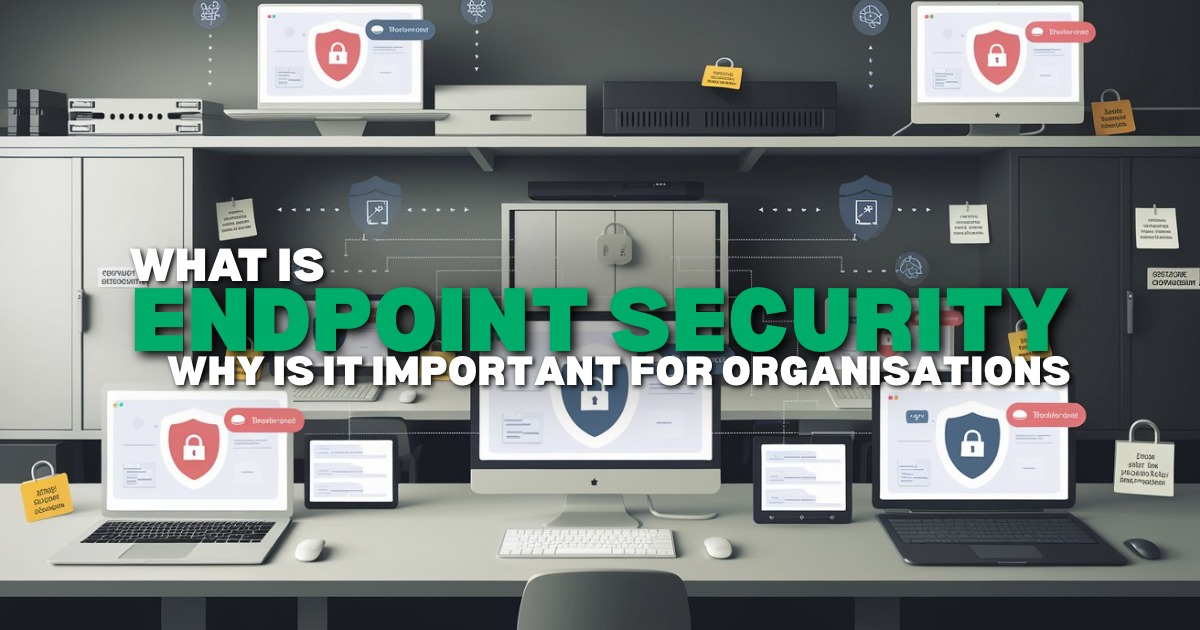The digital world is about to face its biggest challenge yet. Imagine waking up one day to find that all your passwords, bank accounts, and private messages could be cracked in seconds. That’s the reality we’re heading toward with quantum computing, and quantum-resistant encryption is our shield against this storm.
Think of quantum computers as super-powered calculators that can solve math problems millions of times faster than today’s computers. While this sounds cool, it’s also scary because our current security systems rely on math problems that are hard to solve. When quantum computers become powerful enough, they’ll break through our digital locks like a hot knife through butter.
But don’t panic! Scientists and tech experts are working hard to create new types of digital locks that even quantum computers can’t break. This is where quantum-resistant encryption comes in – it’s like building stronger, more innovative locks for our digital world.
What is Quantum-Resistant Encryption? The Simple Explanation
Quantum-resistant encryption (also called post-quantum cryptography) is a new way of protecting digital information that stays secure even when quantum computers try to break it. Think of it as creating a puzzle so complex that even the smartest computer in the world would take billions of years to solve it.
Here’s how it works in simple terms:
- Current encryption is like a diary with a combination lock
- Quantum computers will be able to guess the combination super fast
- Quantum-resistant encryption is like a diary with a completely different type of lock that quantum computers can’t figure out
Why Traditional Encryption Won’t Work
Today’s encryption methods, such as RSA and ECC, are based on mathematical problems that are easy to create but difficult to solve in reverse. It’s like mixing paint colors – it’s easy to mix blue and yellow to get green, but it’s hard to figure out which colors were mixed just by looking at the green.
However, quantum computers utilize a technique called “quantum algorithms” that can solve these backward problems quickly. The median estimate among experts is that within 15 years, a quantum computer will be able to break RSA-2048 in 24 hours, according to recent security reports.
The Quantum Threat Timeline: What 2025 Research Shows
Recent studies provide a clear picture of when we should be concerned about quantum computers compromising our current security systems. Here’s what the latest research tells us:
Current Quantum Computing Progress
Recent research from Boston Consulting Group (BCG) found that quantum computing could add up to $850 billion in economic value to the global economy by 2040. In 2023 alone, quantum computing garnered an estimated $1.2 billion in venture capitalist investments.
We (probably) will not get a cryptographically relevant quantum computer (CRQC) in 2025. Public key encryption (PKE) will (probably) remain safe through 2025, but experts warn that the timeline is accelerating.
What is Ransomware Attack? Types, Protection & Removal
Expert Predictions for Quantum Threats
The timeline for quantum threats varies among experts:
- Conservative estimates: A quantum computer capable of breaking RSA-2048 encryption is unlikely before 2055-2060, though some experts argue it could arrive by 2035 with advances in error correction and algorithm design
- Aggressive predictions: Some large banks in North America are even anticipating quantum-safe encryption to be a necessity as soon as 2027
- Middle ground: By 2034, there was between a 17% and 34% chance that a cryptographically relevant quantum computer would exist
NIST’s Quantum-Resistant Encryption Standards: The 2024-2025 Breakthrough
The National Institute of Standards and Technology (NIST) has been working for years to create new encryption standards that can resist quantum attacks. Here’s what they’ve accomplished:
The Big Announcement: First Quantum-Safe Standards
NIST plans to announce its selection of one or two of these algorithms by the end of 2024, marking a significant milestone in the development of quantum-resistant encryption.
The Winning Algorithms
They’ve selected four quantum-resistant algorithms, including CRYSTALS-Kyber for general encryption and CRYSTALS-Dilithium, FALCON, and SPHINCS+ for digital signatures. These algorithms are designed to withstand quantum computer attacks.
In early 2025, NIST made another important announcement: The new algorithm will serve as a backup for general encryption, protecting data from future quantum computers, and will add HQC as a fifth algorithm to its quantum-resistant toolkit.
Global Competition: China’s Alternative Approach
The race for quantum-resistant encryption isn’t just happening in the US. China has launched a global initiative to develop post-quantum cryptographic algorithms, diverging from US-led efforts, which demonstrates that this is a truly worldwide priority.
How Quantum-Resistant Encryption Works: The Technical Magic Made Simple
Understanding quantum-resistant encryption doesn’t require a PhD in mathematics. Here’s how these new systems work:
Lattice-Based Cryptography
Most quantum-resistant algorithms utilize a technique known as “lattice-based cryptography.” Imagine trying to find the shortest path through a 3D maze with millions of possible routes. Even quantum computers struggle with this type of problem.
CRYSTALS-Kyber (the main algorithm NIST chose) works by:
- Creating a mathematical lattice (like a complex 3D grid)
- Hiding the secret key somewhere in this lattice
- Making it nearly impossible to find the key, even with quantum computing power
Hash-Based Signatures
Another approach uses “hash-based signatures,” which are like digital fingerprints that are impossible to forge. SPHINCS+ is one example of this type of quantum-resistant encryption.
Recent Graduate Cyber Security Jobs: Your Easy Guide to Starting a Safe and Exciting Career
Code-Based Cryptography
Some quantum-resistant systems utilize error-correcting codes – the same technology that enables CDs to play music even when scratched. These codes create puzzles that are hard for any computer to solve.
Real-World Impact: Industries Already Preparing for Quantum-Resistant Encryption
The shift to quantum-resistant encryption isn’t just theoretical – it’s happening now across major industries:
Banking and Finance
Financial institutions are leading the charge because they handle the most sensitive data. Banks are already testing quantum-resistant encryption systems to protect:
- Credit card transactions
- Online banking systems
- International money transfers
- Customer personal information
Government and Military
Government agencies are particularly vulnerable to quantum attacks because:
- They store classified information for decades
- Foreign governments might use quantum computers for espionage
- National security depends on secure communications
Healthcare
Medical records need long-term protection because:
- Patient privacy is legally protected
- Health data is valuable to criminals
- Medical devices need secure communication
Technology Companies
Tech giants like Google, Microsoft, and Amazon are investing heavily in quantum-resistant encryption because:
- They store billions of users’ data
- Their cloud services need future-proof security
- They’re also developing quantum computers themselves
How to Secure Your Small Business from Cyber Threats in 2025
The Business Case: Why Organizations Need Quantum-Resistant Encryption Now
Even though quantum computers can’t break current encryption today, organizations need to start preparing now. Here’s why:
“Harvest Now, Decrypt Later” Attacks
Criminals and foreign governments are already stealing encrypted data with the plan to decrypt it once quantum computers become available. This means:
- Your data encrypted today might be readable in 10-15 years
- Sensitive information needs protection that lasts decades
- The time to act is now, not when quantum computers arrive
Compliance and Regulations
Government agencies are already requiring quantum-resistant encryption:
- Federal agencies must transition to post-quantum cryptography
- Industry regulations are being updated
- International standards are being harmonized
Competitive Advantage
Early adopters of quantum-resistant encryption gain:
- Customer trust and confidence
- Reduced risk of future data breaches
- Compliance with upcoming regulations
- Market positioning as security leaders
Implementation Challenges: What Makes Quantum-Resistant Encryption Difficult
Switching to quantum-resistant encryption isn’t as simple as flipping a switch. Organizations face several challenges:
Performance Issues
Quantum-resistant algorithms often require:
- More processing power
- Larger key sizes
- Slower encryption/decryption speeds
- More memory usage
What Is a SOC in Cybersecurity? How It Protects Your Business
Integration Complexity
Implementing quantum-resistant encryption means:
- Updating existing systems
- Testing compatibility
- Training IT staff
- Managing hybrid environments (old and new encryption together)
Cost Considerations
The transition involves:
- Software licensing fees
- Hardware upgrades
- Staff training costs
- Potential system downtime
Step-by-Step Guide: How to Prepare for Quantum-Resistant Encryption
Organizations can start preparing now with these practical steps:
Phase 1: Assessment and Planning
- Inventory your current encryption systems
- List all applications using encryption
- Identify critical data that needs long-term protection
- Assess current security infrastructure
- Evaluate quantum risk
- Determine how long your data needs protection
- Assess the impact of a quantum attack
- Prioritize systems for upgrade
Phase 2: Testing and Pilot Programs
- Start with non-critical systems
- Test quantum-resistant algorithms in development environments
- Measure performance impact
- Train technical staff
- Implement hybrid systems
- Use both traditional and quantum-resistant encryption
- Gradually transition critical systems
- Monitor performance and security
Phase 3: Full Deployment
- Rollout to critical systems
- Implement quantum-resistant encryption on high-priority systems
- Update security policies and procedures
- Train end users
- Monitor and optimize
- Track system performance
- Update algorithms as standards evolve
- Maintain compliance with regulations
Top 10 Cybersecurity Threats in 2025 & How to Prevent Them
People Also Ask Common Questions About Quantum-Resistant Encryption
What is the difference between quantum encryption and quantum-resistant encryption?
Quantum encryption utilizes quantum physics properties to secure data transmission, while quantum-resistant encryption employs mathematical problems that are computationally intractable for quantum computers to solve. Think of quantum encryption as utilizing the laws of physics as a lock, while quantum-resistant encryption employs mathematical problems as locks.
How long will it take to implement quantum-resistant encryption everywhere?
The transition is expected to take 10-15 years for complete implementation across all systems. Critical systems and new applications will adopt quantum-resistant encryption first, while legacy systems will transition gradually over time. The timeline depends on industry regulations, technology maturity, and organizational priorities.
Will quantum-resistant encryption slow down my computer or the internet?
Early quantum-resistant algorithms may cause some performance impact, but this is improving rapidly. Most users won’t notice significant slowdowns, especially as hardware becomes more powerful. The security benefits far outweigh minor performance considerations.
Is quantum-resistant encryption necessary for small businesses?
Yes, small businesses need quantum-resistant encryption because they often handle sensitive customer data, financial information, and intellectual property. Cybercriminals don’t discriminate by business size, and data protection regulations apply to organizations of all sizes.
Can I start using quantum-resistant encryption today?
Yes, NIST has already published standards for quantum-resistant encryption algorithms. Many security vendors offer quantum-resistant solutions, and organizations can begin testing and implementing these systems now. Early adoption provides enhanced security and compliance benefits.
Top 20 Entry-Level Cybersecurity Jobs | Start Your Career Now
The Future of Digital Security: What Comes After Quantum-Resistant Encryption
As we prepare for the quantum era, researchers are already thinking about what comes next:
Quantum Key Distribution
This technology utilizes the laws of physics to detect when someone is attempting to intercept encrypted messages. It’s like having a security system that automatically alerts you if someone tries to read your mail.
Homomorphic Encryption
This enables computers to perform calculations on encrypted data without first decrypting it. Imagine being able to perform math operations on locked safes without needing to open them – that’s homomorphic encryption.
Artificial Intelligence in Cryptography
AI is helping to develop new encryption methods and detect quantum attacks more quickly than humans can. Machine learning algorithms can identify patterns in quantum attacks and automatically adjust security measures.
Top 15 Low-Cost Business Ideas with High Profit in 2025
Conclusion: Your Digital Future Depends on Quantum-Resistant Encryption
The quantum revolution is coming whether we’re ready or not. Quantum-resistant encryption isn’t just a technical upgrade – it’s the foundation of our digital future. From protecting your photos to securing international banking, these new encryption methods will keep our digital world safe from quantum threats.
Quantum computing will be to 2025 what AI was to 2024, meaning we’re at a crucial turning point. Organizations that start preparing now will be ready when quantum computers become a reality. Those who wait might find themselves vulnerable to attacks that can break their current security in minutes.
The good news is that quantum-resistant encryption solutions are available today. NIST has provided the standards, security vendors have developed the tools, and the path forward is clear. The question isn’t whether you need quantum-resistant encryption – it’s when you’ll start implementing it.
Don’t wait for the quantum storm to hit. Start building your quantum-resistant encryption strategy today, and ensure your digital assets remain secure in the quantum era and beyond.
Ready to protect your organization from quantum threats? Contact us to implement the Implementation Checklist and start building your quantum-safe security strategy today. Get expert guidance, practical steps, and resources to ensure your data stays secure in the quantum era.



